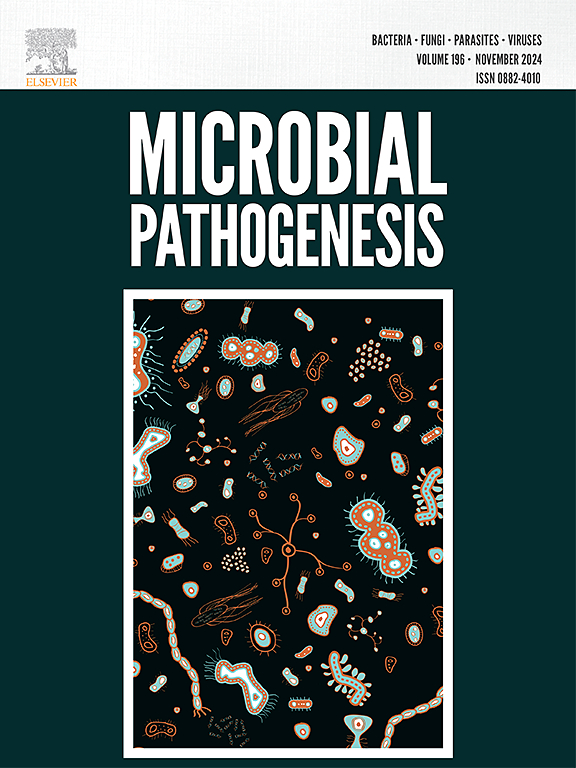沙门氏菌噬菌体 NINP13076 在 BALB/c 小鼠中的毒理学评估:组织病理学研究。
IF 3.3
3区 医学
Q3 IMMUNOLOGY
引用次数: 0
摘要
沙门氏菌是食源性疾病的重要病原菌,在全球范围内构成了一个显著的公共卫生挑战。有效控制食品供应链中的沙门氏菌污染势在必行,因为它对公众健康构成了重大威胁,有可能导致严重疾病,造成致命后果。需要一种新型生物防腐剂来应对食品供应链不同阶段的沙门氏菌食品污染。噬菌体在生物食品保鲜方面的安全性和功效已得到公认。鉴于噬菌体与食物一起食用,评估其对益生菌肠道微生物群的潜在毒性变得至关重要。本研究采用 BALB/c 小鼠来评估针对沙门氏菌的噬菌体的亚慢性口服毒性。通过口服沙门氏菌噬菌体连续亚慢性给药 28 天后,重要器官(包括肺、肾、心脏、肝脏和肠道)的组织病理学检查显示,对照组和实验组的器官结构正常,无明显病理异常。实验组小鼠的身体和行为没有发生变化。此外,即使在与沙门氏菌噬菌体培养 24 小时后,指示性益生菌的增殖仍保持不变。对照组和实验组的体重以及尿液检测结果的比较分析均未显示出任何变化。值得注意的是,噬菌体对益生菌微生物群没有明显影响,特别是从接受治疗和未接受治疗的小鼠盲肠中分离出的乳杆菌和双歧杆菌。在未接受治疗的小鼠中,益生菌数量(平均对数 CFU/毫升)分别为 1.9 至 2.4 log 和 2.4 至 2.5 log,而在接受治疗的小鼠中,乳酸杆菌和双歧杆菌数量分别为 2.0 至 2.3 log 和 2.3 至 2.4 log。调查结果表明,口服溶解性沙门氏菌噬菌体对动物没有明显的不良影响,表明没有危害。本文章由计算机程序翻译,如有差异,请以英文原文为准。
Toxicological evaluation of Salmonella phage NINP13076 in BALB/c mice: Histopathological studies
Salmonella spp. represent a significant etiological agent of foodborne illnesses and constitute a notable public health challenge on a global scale. Effectively managing Salmonella contamination within the food supply chain is imperative, as it represents a significant threat to public health, potentially leading to severe illnesses with fatal consequences. A novel bio-preservative agent is required to combat Salmonella food contamination during different stages of the food supply chain. Bacteriophages are acknowledged for their safety and recognized for their efficacy in bio-food preservation. Given their consumption together alongside food, it becomes pivotal to assess their potential toxicity concerning the probiotic gut microbiota. In this research, BALB/c mice were employed to evaluate the sub-chronic oral toxicity of bacteriophages targeting Salmonella. Following 28 consecutive days of sub-chronic administration of the Salmonella phage through oral means, histopathological examinations of vital organs, including the lung, kidneys, heart, liver, and intestine, revealed normal organ structures and no significant pathological abnormalities, in both the control and experimental groups. No physical or behavioural change was noticed in the experimental mice. Furthermore, the proliferation of indicative probiotic bacteria persisted unchanged even following a 24-h incubation with the Salmonella phage. The body weight of both the control and experimental subjects, along with a comparative analysis of urine test results, exhibited no variations. Notably, the phages demonstrated no discernible impact on the probiotic microbiota, specifically the Lactobacillus and Bifidobacterium species isolated from the caecum of both mice that received treatment and those that did not. In untreated animals, the probiotic population (mean log CFU/ml) ranged from 1.9 to 2.4 log and 2.4 to 2.5 log, while in treated mice, it ranged from 2.0 to 2.3 log and 2.3 to 2.4 log for the Lactobacillus and Bifidobacterium species, respectively. The results of the investigation indicate that the oral administration of the lytic Salmonella phage showed no observable adverse effects on the animals, indicating an absence of harm.
求助全文
通过发布文献求助,成功后即可免费获取论文全文。
去求助
来源期刊

Microbial pathogenesis
医学-免疫学
CiteScore
7.40
自引率
2.60%
发文量
472
审稿时长
56 days
期刊介绍:
Microbial Pathogenesis publishes original contributions and reviews about the molecular and cellular mechanisms of infectious diseases. It covers microbiology, host-pathogen interaction and immunology related to infectious agents, including bacteria, fungi, viruses and protozoa. It also accepts papers in the field of clinical microbiology, with the exception of case reports.
Research Areas Include:
-Pathogenesis
-Virulence factors
-Host susceptibility or resistance
-Immune mechanisms
-Identification, cloning and sequencing of relevant genes
-Genetic studies
-Viruses, prokaryotic organisms and protozoa
-Microbiota
-Systems biology related to infectious diseases
-Targets for vaccine design (pre-clinical studies)
 求助内容:
求助内容: 应助结果提醒方式:
应助结果提醒方式:


